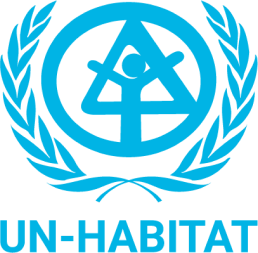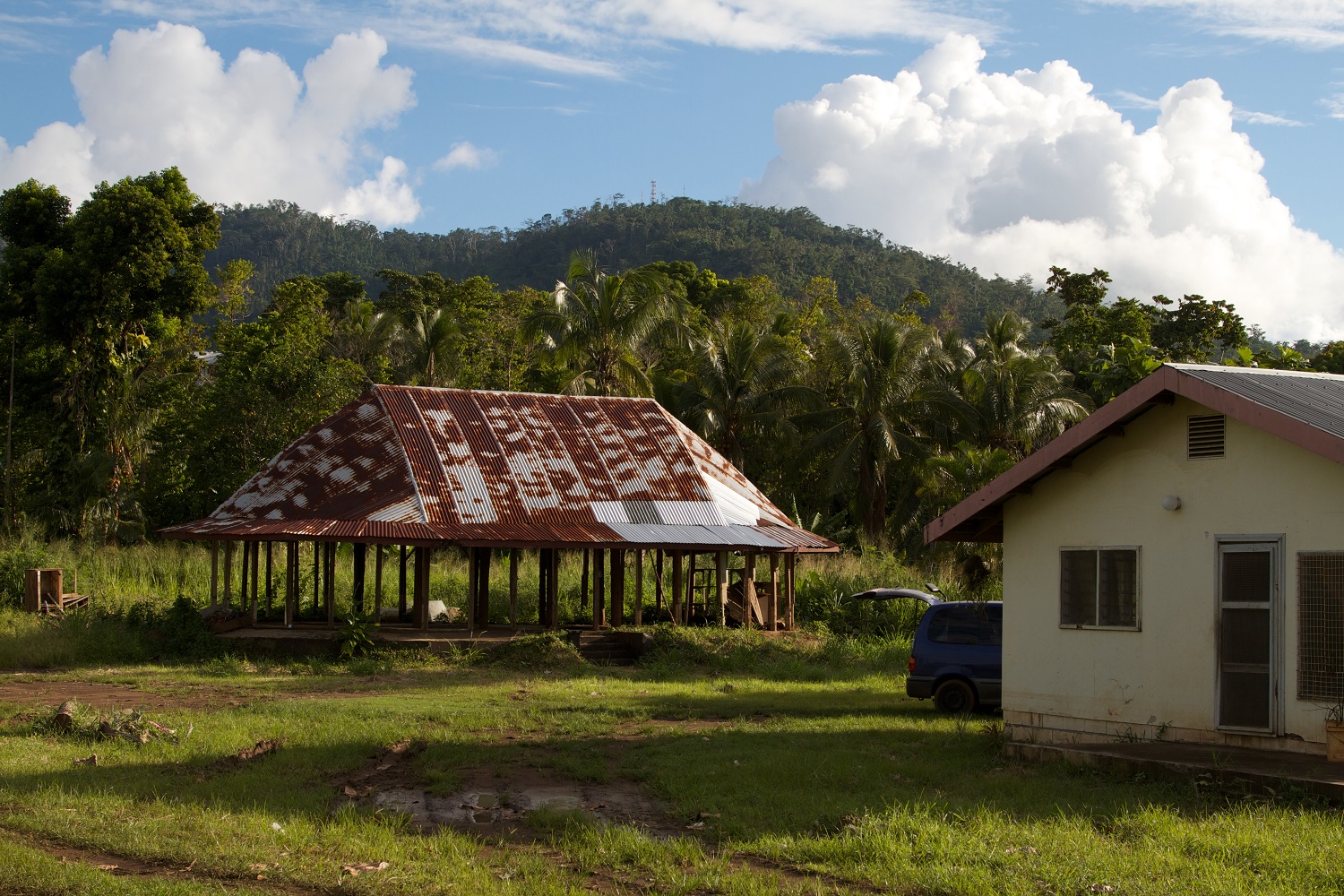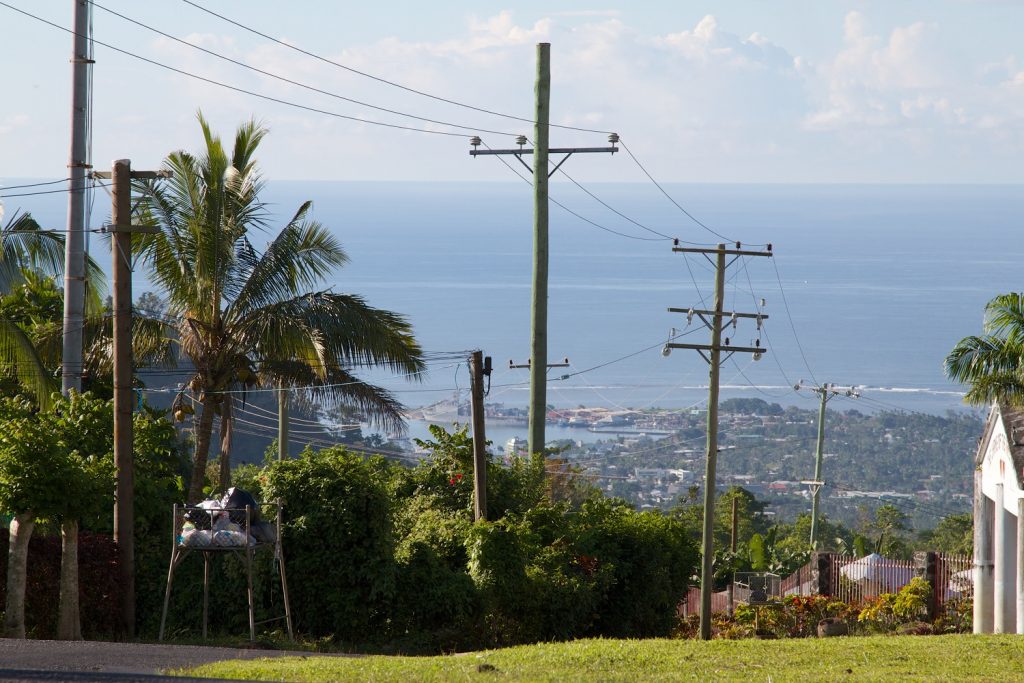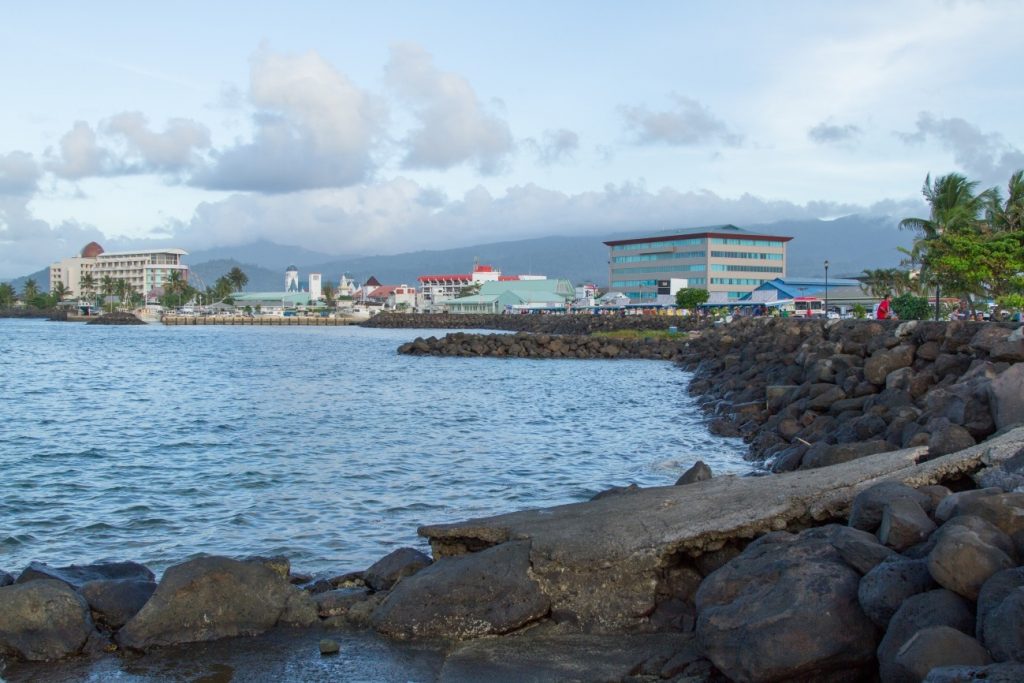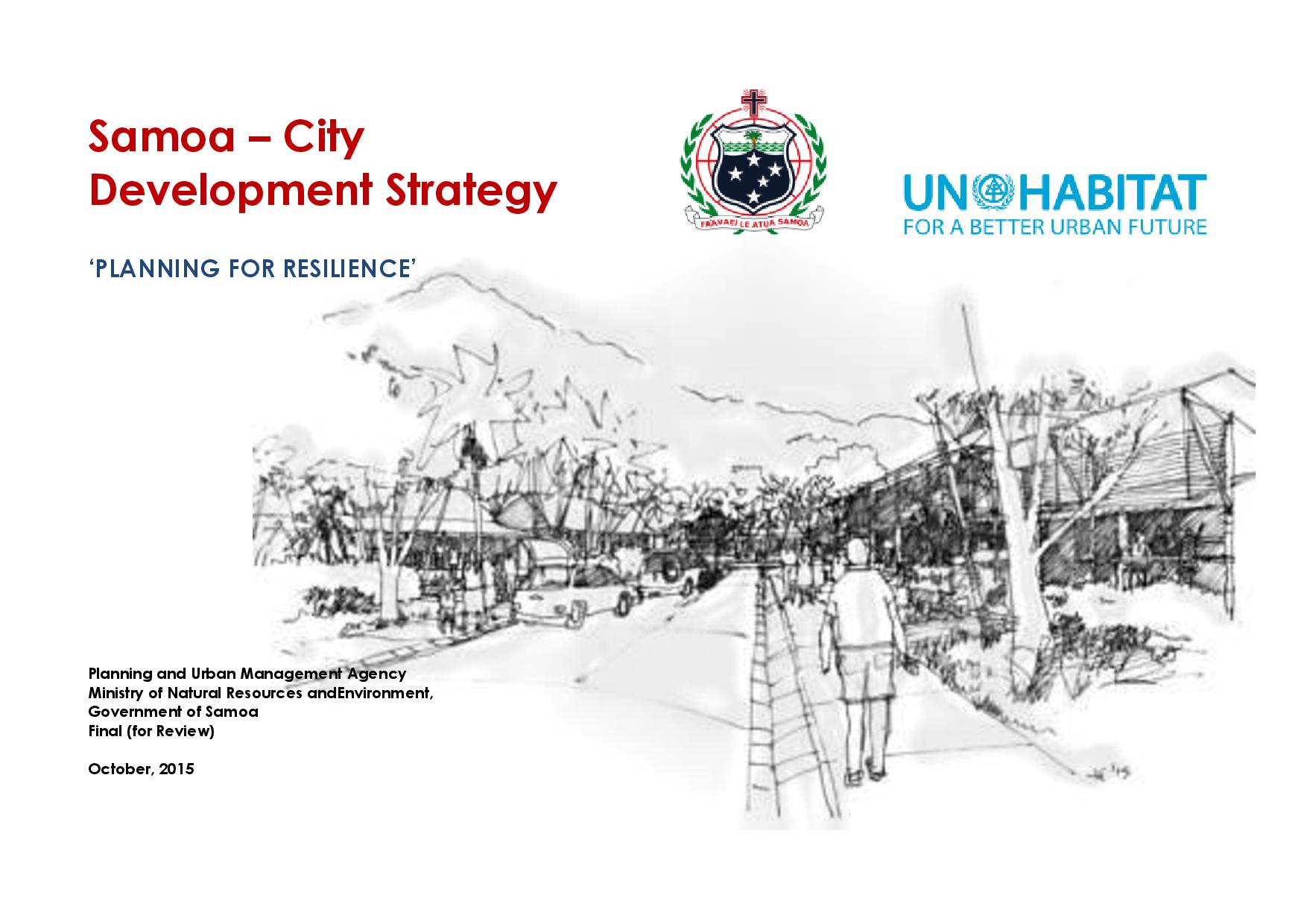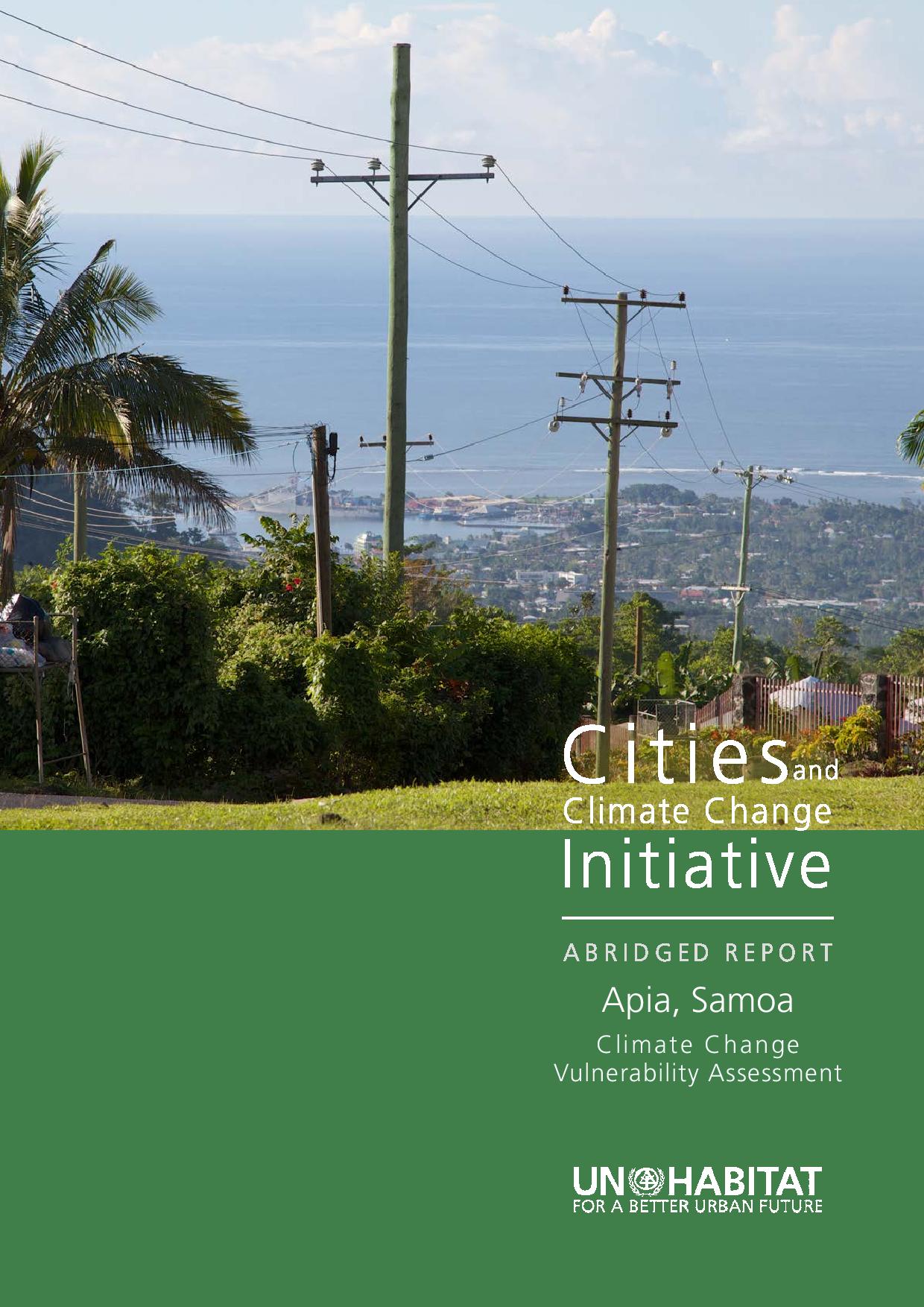Background
A City Development Strategy (CDS) helps a city allocate resources where they will make the most impact and attract capital for use in a disciplined way. Additionaly, a CDS helps officials clarify their vision for the city through community participation, partnership development and strategic planning to anticipate potential shocks and future growth.
The Samoa Central Government through its Planning and Urban Management Agency (PUMA) is using the CDS to address current urban management concerns. With a focus on climate change risks, the CDS for the Greater Apia Area is defined by the Samoa National Strategy for Development (2012-16) in the four priority areas of their economic, social, infrastructure and environmental sectors. The project also includes a policy development and knowledge sharing component to disseminate the lessons learned to other countries in the region.
Drawing from the Apia Spatial Plan (2014), UN-Habitat’s Climate Change Vulnerability Assessments of Apia and the Apia Waterfront Development Report, the outputs of the Samoa CDS will include the Apia Urban Profiling Report, the Local Area Infrastructure Plan, and the Institutional Review of PUMA.
It is expected that by taking such action the outputs will collectively make a positive contribution to the social, economic and environmental quality of life of urban dwellers; and, at a broader level, contribute to Samoa’s achievement of the MDGs.
Objectives
The overall objective of the programme is to support preparation of an integrated sustainable management plan for the greater Apia area through a “climate proofed” CDS approach.
The sustainable management plans outline future socio-economic and infrastructural development city-wide, including priority settlements for upgrading support.
Concurrently, this process strengthens Samoa’s urban management institutional framework so it can better create more inclusive, participative, productive, liveable and sustainable towns.
The scope of the Programme includes five components:
1) Assessment, Analysis and Strategy;
2) Supporting Infrastructure Investment for Priority Projects;
3) Institutional Strengthening;
4) Policy Learning and Knowledge Sharing; and
5) Monitoring and Evaluation.
Activities
Activities of UN-Habitat supported the immediate outcome of the CDS, namely, to target and prioritize investment for the identified urban centres from governments, the private sector, donor/aid agencies and financial institutions, helping to drive urban growth while also ensuring the needs of the most vulnerable are met.
In the short term, all activities that UN-Habitat conducted should be addressing some of the most immediate environmental challenges arising from lack of adequate physical infrastructure in villages, and should result in improvements in water quality, community drainage and sanitation. The CDS builds the capacity of authorities to undertake improved strategic planning, support a higher flow of investment to targeted areas and better incorporate the socio-economic dimensions of the coastal infrastructure management plans.
In the longer term, implementation of the CDS is expected to result in more balanced economic activity to ensure that the benefits are not limited to the Apia central area but flow also into neighbouring districts. It will also help balance increasing socio-economic growth while planning strategically for environmental impacts and solutions, and assist with the fuller application of the Planning and Urban Management Act.
Donors and Key Project Stakeholders
Donor:
Cities Alliance
Key Project Stakeholders:
Planning and Urban Management Agency, Ministry of Natural Resources and Environment, Government of Samoa
